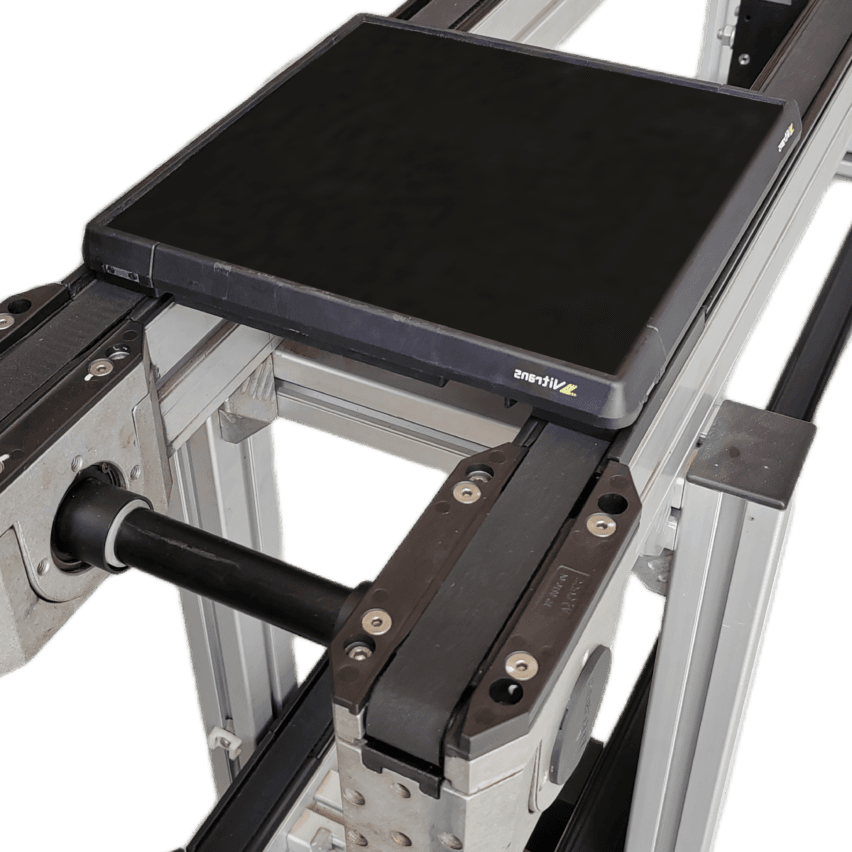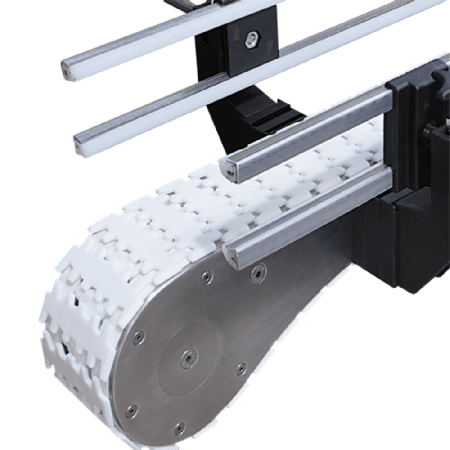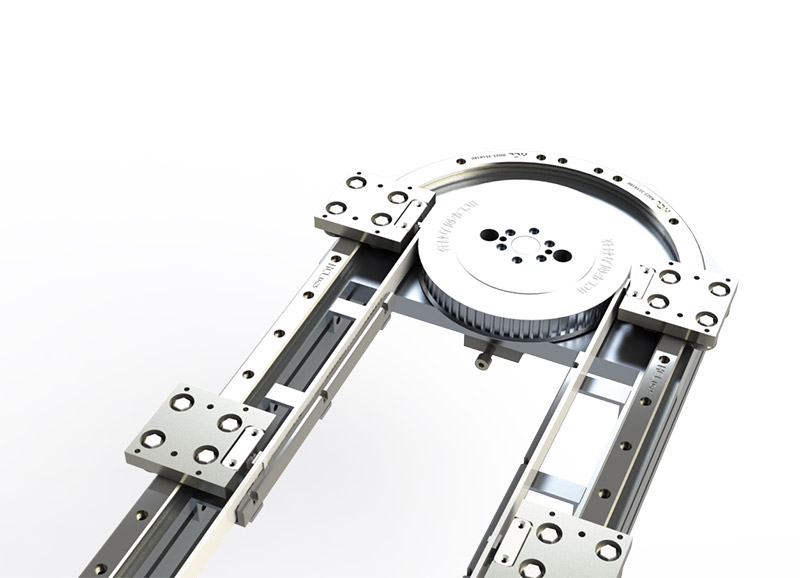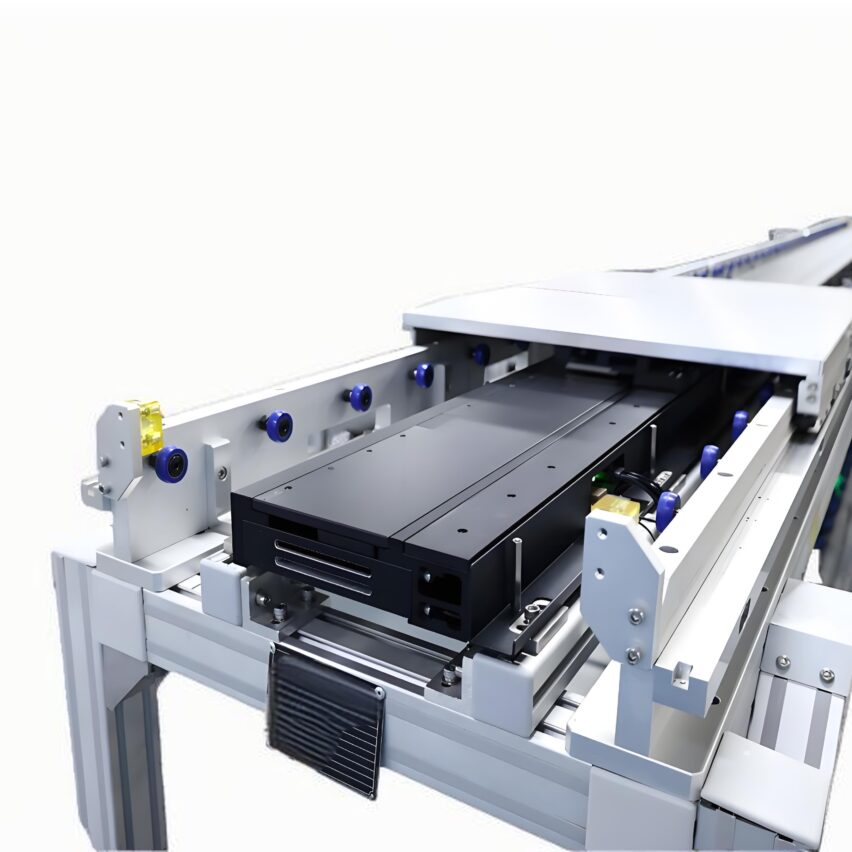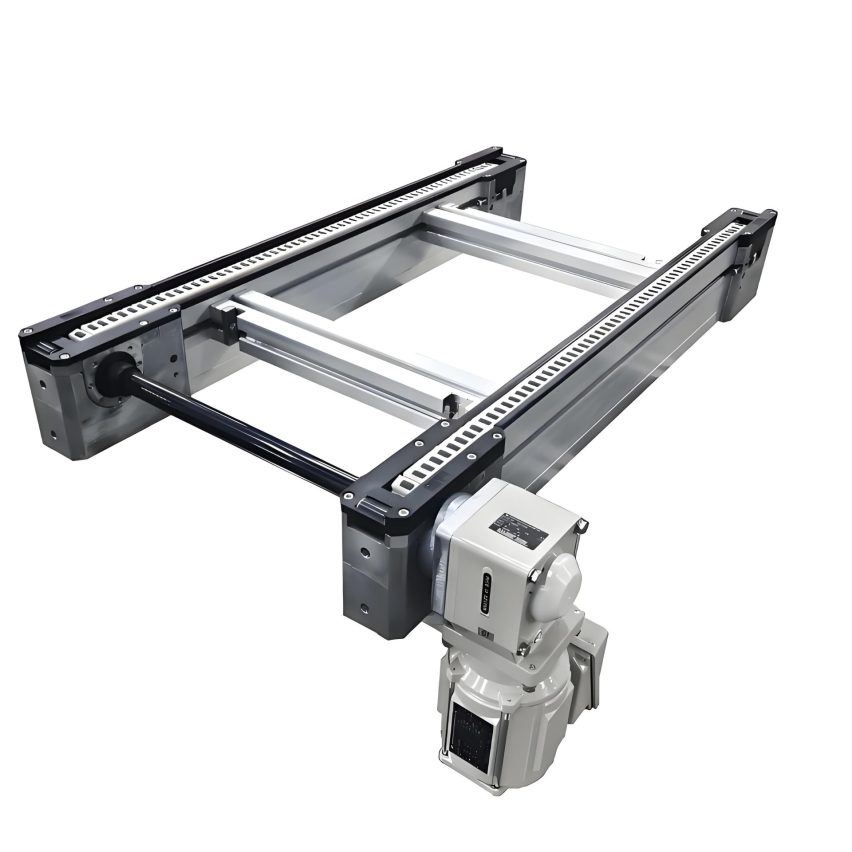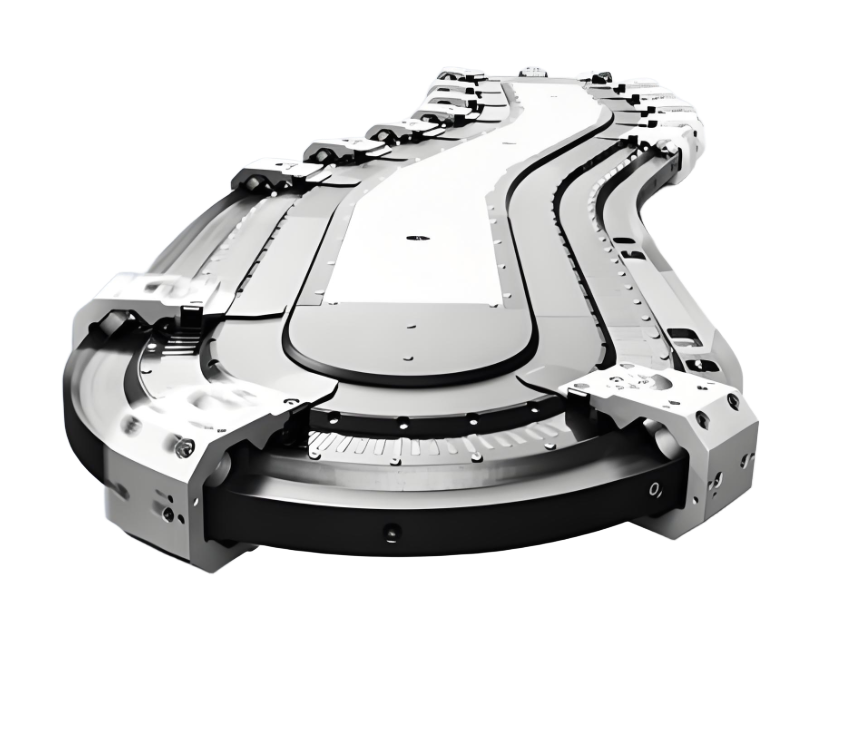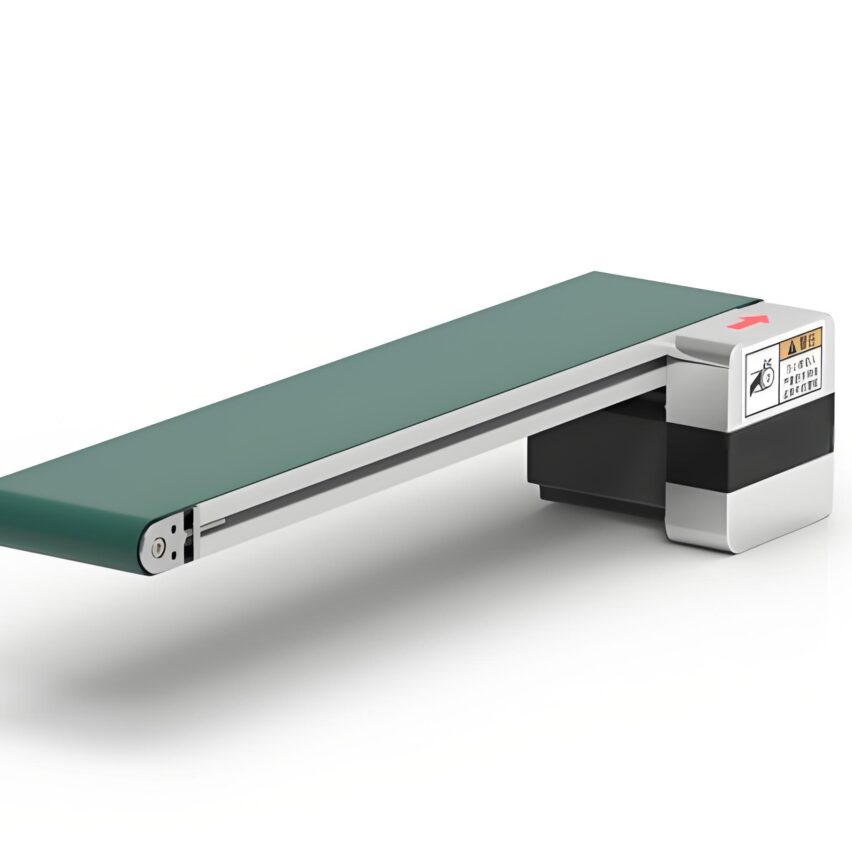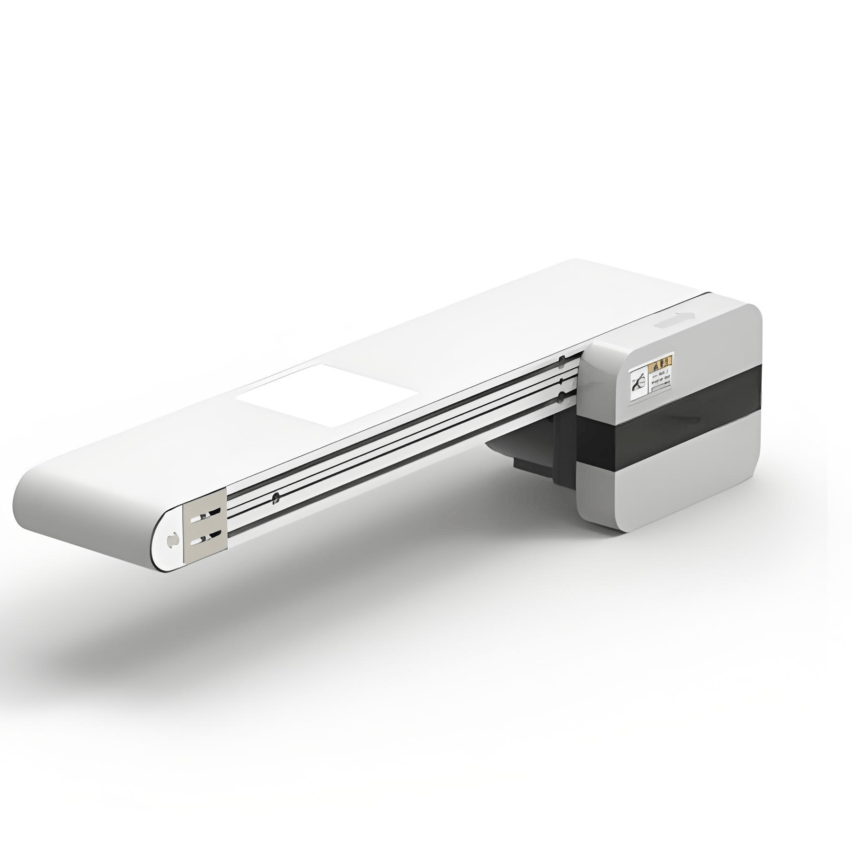Have you just taken on a conveyor project and are staring at motor parameters and chain models that are confusing? Or are you always puzzled when disassembling and assembling equipment.Why does the chain rattle after half a year of use? The teeth are worn out.Don't panic. Don't panic, today we will break down and talk about the roller chain drive design -From formulas to spanners, it's all hands-on..
Firstly, what is the structure of the roller chain?
Imagine an enlarged version of a bicycle chain. The core is just five parts.The inner chain plate catches the sleeve, the outer chain plate snaps the pin, and the middle roller can rotate freely.Why is it designed that way? Why is it designed this way? Because when the chain and gears bite, the rollers canChange sliding friction to rolling friction.The wear and tear is directly halved. Here's a key parameter.Pitch (p)-It is the distance between the centres of two adjacent pins. It directly determines how thick the chain is and how much it can carry, for example, 12A chain gauge pitch is 19.05mm, 16A goes to 25.4mm. newbie remember.The larger the pitch, the stronger the chain, but the noisier it is too!.
Second, the design calculation of seven steps to avoid the pit of 90%
Step 1: Set the operating parameters - don't guess!
Let's start by clarifying four iron-clad statistics.Motor power (P), small sprocket speed (n1), transmission ratio (i), load type. Let's say you design a belt conveyor with a 7.5kW motor at 970r/min, and the driven wheel should be 300r/min with a smooth load - that's your starting line.
Step 2: Choose odd, not even, number of teeth.
The number of teeth of the small sprocket (z1) should not be determined by the head.! Too little (say 114 teeth) and easy to skip teeth.See the value of experience here::
- When the transmission ratio i=1~2, z1 selects 31~27 teeth.
- When i=3~4, select 25~23 teeth
- Minimum 17 teeth for i>6
Key Tips: The number of teeth must be chosen as an odd number! For example 19, 21, 23. so that the chain rains on every joint and wears more evenly.
Step 3: Calculate the power to be discounted
Take the motor power directly? Wait for the chain to break! We'll have to useCalculated power Pca::
make a copy ofPca = KA × KZ × P / KP
- KA (working condition factor): 1.0 for smooth loads, 1.5 or more for those with shocks (e.g. crusher)
- KZ (coefficient of small sprocket teeth): about 1.34 for 25 teeth, the smaller the teeth the greater the coefficient
- KP (multi-row chain factor): Single row of chains = 1.0, double row = 1.7, triple row = 2.5
Step 4: Look up the table to determine the chain number - don't get greedy!
Take the pca and n1 and checkRated power graph(Figure 2). For example, Pca=9.75kW, n1=970r/min, 10A chain (pitch 15.875mm) should be selected.lesson learnt through blood and tears: Don't blindly choose a large chain size! Large pitch chains are noisy, unless your equipment is not afraid of noise in the mine.
Step 5: Centre distance and number of links - better long than short!
Initially set the centre distance a0 between 30 and 50 times the pitch (e.g. 10A chain is about 480 to 800 mm). Then count the number of chain links Lp:
make a copy ofLp = 2a0/p + (z1+z2)/2 + (p/a0)×[(z2-z1)/2π]²recount (e.g. results of election): The result must be rounded to an even number! Otherwise you have to usetransition link--That stuff is expensive and bends easily.
Step 6: Checking chain speed - 0.6m/s is life and death
The chain speed formula is simple:
make a copy ofv = z1 × n1 × p / 60000 (unit: m/s)But it's significant:
- v > 0.6m/s: Designed for fatigue strength (most scenarios)
- v ≤ 0.6m/s: Designed for static strength (e.g. cranes lifting weights at slow speeds)
Step 7: Lubrication method in the right place
Lubrication is selected according to chain speed:
- v < 1.5m/s: manual oil brushing is fine
- v=1.5~7m/s: oil bath or oil drop can be used.
- v>7m/s: must be injected by the oil pump.
I have seen too many factories save money on lubrication oil, the result is that the chain dry grinding sparks.
III. Self-questioning: the 5 biggest headaches for novices
Q1: Why does the chain get "longer" with use?
reply: it's not really elongated, it'sThe pin and sleeve have worn out the clearance.! Especially dusty workshops double the rate of wear.prescription: Select carbon steel heat-treated chain, or adjust the tensioner pulley periodically.
Q2: Is a ratio i=10 OK?
reply: Death wish!Recommended i≤7If you want to use a small sprocket, don't exceed 10, otherwise the wrapping angle of the small sprocket will be too small, and the chain will not be able to bite the teeth. Really want high speed ratio? Use multi-stage transmission or change synchronous belt.
Q3: Is the chain tight side up or down?
reply:.Tight edges must be onThe loose edge has a lot of droop! The loose side has a lot of sag and is put underneath so it doesn't bump against the tight side as easily. I've seen people put it on backwards and the chain runs like a fast board.
Q4: How do you mess up a vertically arranged chain drive?
reply: Try to avoid it! If you have to mount it vertically:
- Centre distance increase 20% Anti-dithering
- Axial force factor from 1.15 to 1.05
- Tensioner wheel mounted loose side
Q5: What is a reliable safety factor to take?
reply: See how deadly the equipment is:
- Ordinary conveyor: static strength safety factor [S] ≥4~8
- Cranes for lifting heavy loads: directly doubled to ≥16
Fourth, the actual combat selection: hand to hand calculation to you see
take: Lift load 300kg + counterweight 100kg, speed 0.2m/s, sprocket 21 teeth.
- count the tensile force: Net lifting force = 3000 N, plus 2 times the safety factor→F=6000N
- selective chain number (SCR): Low-speed, heavy-duty option16A Chain(Pitch 25.4mm, breaking load ≥ 60kN)
- Checkpoint security: Actual safety factor = 60kN/6kN = 10 →eligible (voter etc)
- Tensioning Tips: Add a screw tensioner, don't let the chain hang in a parabola!
Editor's view
Don't stick to formulas! Hold on to three things: The number of teeth must be odd, allow for adjustment of the centre distance, and don't save on lubricant. I've seen too many people get the parameters right and the chain won't fit -The field with an angle grinder to cut the chain plate are not know how to design tears.


